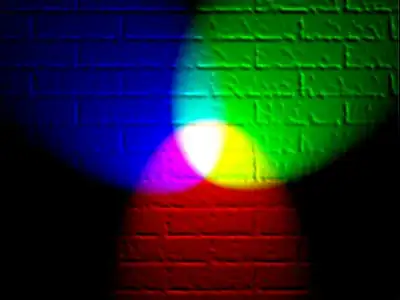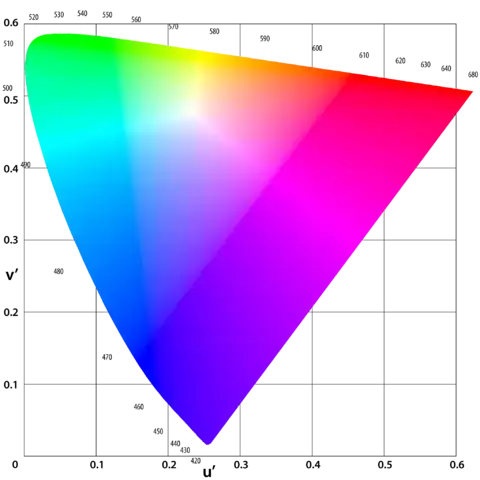Suppose a white light, which consists of many colors which are explored in this question. Now suppose by any means, I'm able to eliminate the blue color from the spectra. How the light now look like? Does it still be white or spectra without blue?
2 Answers
A visual representation of how colours look as they are mixed with each other can be shown with a chromaticity diagram:
Specifically, this one is meant to be "perceptually uniform", which theoretically means that it's scaled so that an additive mixture of two differently coloured lights would fall somewhere on the line between two of them. This also means that we can take the mixture and one of the original lights, draw a line from B to A, and the other component must be somewhere past A. In practice, the correspondence is not exact due to the limitations of sRGB and computer monitors, but we can still see that if draw a line from blue to white, the other end must be somewhere in the yellowish region.
We can also see this in the RGB colour model itself: Red, green and blue mix together to make white—without blue, we instead get yellow.

(en:User:Bb3cxv, CC BY-SA 3.0, via Wikimedia Commons)
- 125
If you eliminate blue light from white light you will be left with yellow light (or a blend of frequencies that looks yellow to the human eye).
In fact, that is how an LCD TV works. The backlight is white and there are filters for red, blue and green light that can be switched on and off for each pixel. Switching on the blue filter to block blue light gives you yellow.
Red + Green + Blue = White
Red + Green = Yellow
Red + Blue = Magenta
Blue + Green = Cyan.
- 2,183
